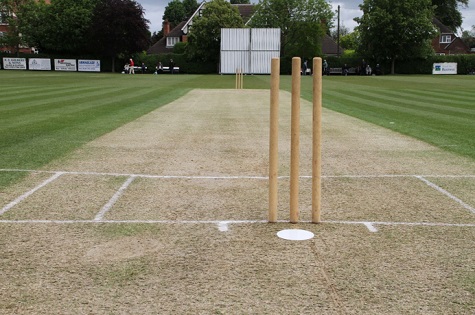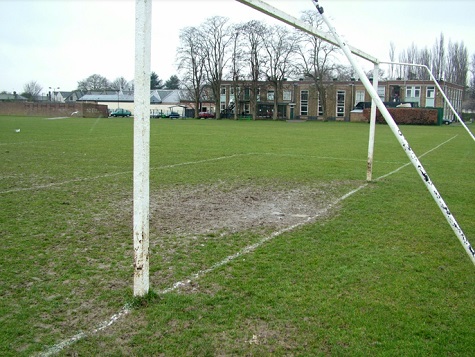It's good to be back with you today, following last week's break for easter.
I always feel that April is one of the greatest months of the year - not only because it’s my birthday month! - but because it often sees a dramatic change in the weather.
April is a transitional month between winter and spring and the weather can be quite changeable. On average, temperatures can range from 7°C to 12°C (45°F to 54°F) in the daytime, but they can sometimes drop to below freezing at night. It's also common to experience cool and rainy weather in April, with an average of 14 rainy days throughout the month.

However, there are also periods of sunny and mild weather, especially towards the end of the month. In general, the weather can be quite unpredictable in the UK, and it's not uncommon to experience sudden changes throughout a single day.
It also a time when we see a dramatic spurt of growth in our gardens and grounds, especially seeing a burst of colours in many of our spring flowering bulbs, shrubs and trees. We also start to see some much-needed grass growth of our natural turf playing surfaces, which in turn leads to April being one of the busiest months of the year for turf professionals and club volunteers.
For cricket, preseason rolling should be coming to a close and the clubs will be turning their attentions to preparing their wickets. Usually a ten day preparation process typically includes the following work:

Scarifying: This process involves using a special machine to remove any dead grass or debris from the pitch, ensuring that it is clean and ready for the next stage.
Rolling: Rolling is an essential part of pitch preparation. It helps to compact the soil and create a smooth, even surface for the ball to bounce predictably. Rolling is typically done daily during the ten-day period, with heavier rollers being used towards the end to ensure that the pitch is properly compacted.
Grass Cutting: Grass cutting is another crucial step in wicket preparation. The grass needs to be trimmed to a specific length to ensure a consistent bounce and to prevent the ball from deviating unexpectedly. The grass is typically cut to a length of around 6-8mm, and the process is repeated every other day.
Watering: Watering is important to keep the pitch moist and prevent it from becoming too hard and dry. The pitch is typically watered every day, with the amount of water being adjusted depending on the weather conditions.
Fertilising: Fertilising helps to promote healthy grass growth, ensuring that the pitch remains in good condition throughout the match. Fertilizers are typically applied every three days.
Pitch Covering: Pitch covering is done to protect the pitch from the elements. Covers are typically used during rain or overnight to prevent the pitch from becoming too wet or too dry.
Testing: Testing is done regularly during the ten-day period to ensure that the pitch is of the required quality. Tests include measuring the hardness of the pitch, checking the evenness of the bounce, and assessing the grass coverage.
These are some of the tasks that may be performed during a ten-day wicket preparation period for cricket. However, it's important to note that the specific tasks and timeline may vary depending on factors such as the location, weather conditions, and the level of the match being played.

As for rugby and football clubs, their playing seasons are now coming to an end and the focus will be for the clubs to organise and plan the relevant end of season renovations. The level and extent of the renovations will be dependent on several factors including the condition of the playing surface, the expectations of the club and what budgets they have available.
More help and advice, including on the potential funds available to improve pitches, is available from the The Grounds Management Association and their recently launched the Grounds Management Framework.
As for bowls, April sees the start of both the flat and crown green bowling seasons. Clubs will be busy preparing the greens for matches.
The work carried out on natural turf bowling greens in April will depend on the specific conditions of the green and the climate of the region. However, here are some general maintenance tasks that can be done on natural turf bowling greens in April.
Regular verticutting either monthly or fortnightly helps remove any dead or decaying grass, moss, or thatch on the surface of the green. This allows more air, water, and nutrients to reach the roots of the grass. Also some aeration will help relieve soil compaction and allows better movement of air, water, and nutrients through the soil. It can be done using a hollow tine or solid tine aerator.
An application of fertiliser will help promote healthy growth of the grass and help it recover from any winter damage. Choose a fertilizer with a balanced NPK ratio and follow the manufacturer's instructions for application rates.

Regular mowing usually every other day, or in some instances daily, will encourage the grass to thicken and will help prevent weeds from taking hold. Adjust the height of the mower according to the time of year and the weather conditions. If the weather is dry, water the green regularly to keep the grass healthy and hydrated. Water deeply but infrequently, to encourage deeper root growth.
If weeds are present, remove them manually or use a selective herbicide to control them. Be sure to follow the manufacturer's instructions and local regulations when using herbicides.
By following these maintenance tasks, you can keep your natural turf bowling green healthy and looking its best in April.